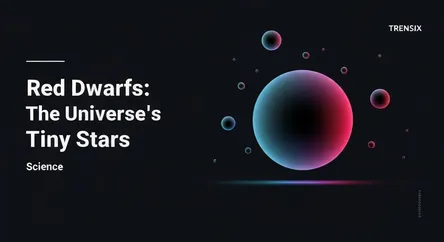Science
Red Dwarfs: The Universe's Tiny Stars

Discover red dwarfs, the most common stars in the universe. Learn why these long-lived, dim stars are top targets in the search for habitable exoplanets.
What is it?
A red dwarf is the smallest and most common type of star, comprising 75% of the stars in the Milky Way. They burn fuel so slowly their lifespans can last trillions of years—longer than the universe's current age. Due to their dimness, none are visible to the naked eye from Earth. Their name reflects their small size and reddish color, which is a result of their relatively cool surface temperature.
Why is it trending?
Red dwarfs are prime targets in the search for extraterrestrial life. Their extreme longevity provides a stable environment for life to potentially evolve on orbiting planets. Discoveries of Earth-sized worlds in the habitable zones of nearby red dwarfs, like TRAPPIST-1, have spurred massive interest. Powerful observatories like the James Webb Space Telescope are now analyzing these planets' atmospheres for biosignatures, making this a cutting-edge field of astronomy.
How does it affect people?
While distant stars don't affect daily life, their study helps answer a fundamental question: are we alone? Research into red dwarfs drives technological innovation in telescopes and inspires public interest in science. Discovering life on one of their planets would be a profound moment for humanity, reshaping our cosmic perspective. It fuels our collective curiosity and pushes us to explore our place in the universe.